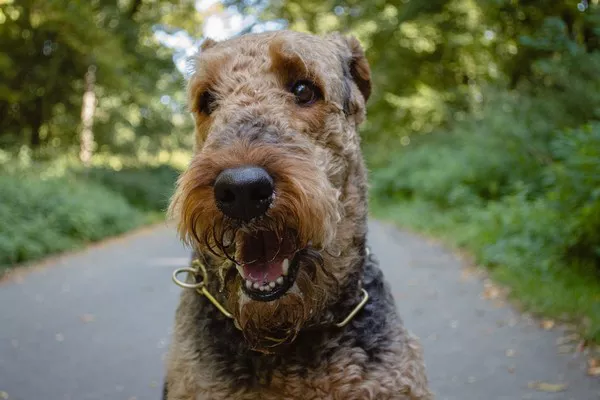Dogs are active, playful creatures, and their nails play a crucial role in maintaining balance and stability. However, it is not uncommon for dogs to experience nail injuries, such as splitting or breaking. A split nail can cause discomfort and pain for our canine companions and may require proper treatment to ensure a quick and comfortable recovery. In this article, we will explore the common causes of split nails in dogs, the signs and symptoms to look out for, and the steps to effectively treat and prevent such injuries.
Causes of Split Nails in Dogs
Several factors can contribute to a dog‘s nail splitting, and it’s essential for pet owners to understand these causes to prevent future occurrences. Some common reasons include:
Overgrowth of Nails: When a dog’s nails are not trimmed regularly, they can grow too long and become prone to splitting. Long nails may get caught on surfaces, leading to fractures.
Trauma or Injury: Dogs are naturally curious and can easily injure their nails during outdoor activities or playtime. Sudden impacts or catching the nail in objects can result in splits.
Lack of Proper Nutrition: A diet lacking essential nutrients, such as biotin, can lead to weakened nails that are more susceptible to splitting.
Underlying Health Issues: Certain health conditions, like fungal infections or metabolic disorders, can weaken the nails and make them more prone to splitting.
Environmental Factors: Extreme dryness or excessive moisture can cause the nails to become brittle or soft, making them susceptible to splitting.
Identifying a Split Nail in Your Dog
Detecting a split nail in your dog is crucial to providing timely care and preventing further complications. Watch out for the following signs and symptoms:
Limping or Favoring One Paw: Dogs experiencing nail injuries often limp or avoid putting weight on the affected paw.
Visible Split or Crack: A visible split or crack in the nail is a clear indication of an injury. However, in some cases, the split may be small and challenging to spot, necessitating a closer examination.
Bleeding: A split nail may result in bleeding, especially if it occurs close to the nail bed where blood vessels are present.
Pain and Discomfort: Dogs with a split nail may exhibit signs of pain, such as licking or chewing at the affected area.
Swelling and Inflammation: The area around the split nail may become swollen and red due to irritation.
Treating a Split Nail
If you suspect your dog has a split nail, it’s essential to handle the situation carefully and seek appropriate treatment. Here are the steps to take:
Examine the Nail: Gently inspect the affected nail to assess the severity of the split. If the nail is bleeding, try to apply gentle pressure to stop the bleeding.
Clean the Wound: If the nail is dirty, clean the area around the split carefully with mild soap and warm water. Be cautious not to get soap or water into the split, as it may cause further irritation.
Trim the Nail: If the split is minor and not too close to the quick (the blood vessel inside the nail), you can carefully trim the loose part of the nail using a clean and sharp nail clipper.
Styptic Powder or Cornstarch: In cases of bleeding, applying a small amount of styptic powder or cornstarch to the wound can help promote clotting. These products can be found at most pet supply stores.
Antibiotic Ointment: Applying a thin layer of antibiotic ointment to the split nail can help prevent infection and promote healing.
Protective Covering: To prevent further damage and keep the wound clean, consider placing a protective covering over the injured nail. You can use a small, clean sock or a dog-specific boot.
Pain Relief: If your dog seems to be in pain, consult your veterinarian for appropriate pain relief medication. Avoid giving human pain medications to dogs without veterinary guidance.
Prevent Licking: Dogs may try to lick or chew at the injured nail, which can worsen the condition or introduce infection. Consider using an Elizabethan collar (cone) to prevent licking.
Limit Physical Activity: Encourage your dog to rest and avoid engaging in activities that may put strain on the injured nail. Limit outdoor walks on rough terrain until the nail has healed.
When to Seek Veterinary Care
While minor split nails can often be treated at home, some cases may require veterinary attention. Contact your veterinarian if:
The nail split is severe, deep, or close to the quick.
The bleeding does not stop or seems excessive.
There are signs of infection, such as pus or increasing redness and swelling.
Your dog’s pain does not subside with home care.
The nail appears to be ingrown or trapped.
A veterinarian can provide proper care, prescribe medications if necessary, and ensure that the nail heals correctly.
Preventing Nail Injuries in Dogs
Preventing split nails in dogs is possible with some simple measures:
Regular Nail Trimming: Trim your dog’s nails regularly to prevent overgrowth and reduce the risk of splitting.
Exercise Caution During Play: While playtime is essential for your dog’s well-being, be cautious during rough play or activities that could cause trauma to the nails.
Provide Proper Nutrition: Feed your dog a balanced diet with essential nutrients to support nail health.
Keep Nails Moisturized: If you live in a dry environment, consider using pet-safe moisturizers on your dog’s nails to prevent them from becoming too brittle.
Maintain Paw Hygiene: Keep your dog’s paws clean and free from debris, which can contribute to nail injuries.
Conclusion
Split nails can be painful and uncomfortable for dogs, but with prompt and appropriate care, most cases can be effectively treated at home. Regular nail maintenance, attention to your dog’s environment, and providing proper nutrition can help prevent such injuries in the future. Remember, if you are unsure about how to treat a split nail or if the injury appears severe, always consult your veterinarian for guidance and support in ensuring your furry friend’s quick and comfortable recovery.


